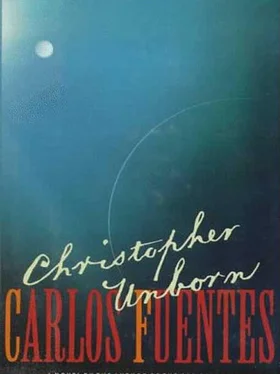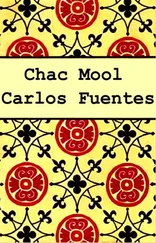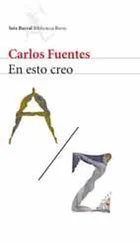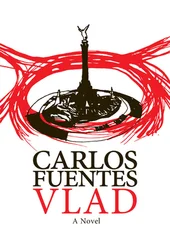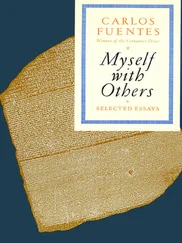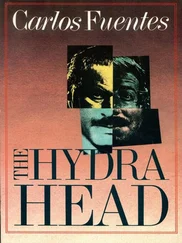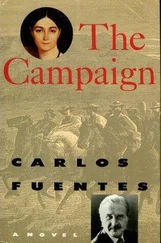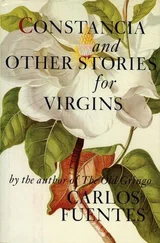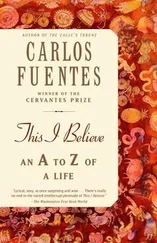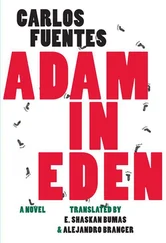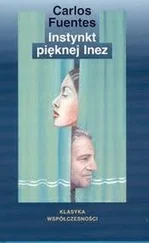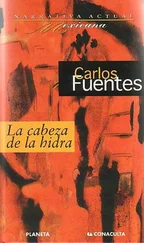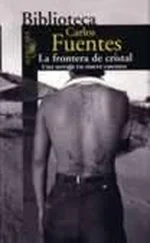Carlos Fuentes - Christopher Unborn
Здесь есть возможность читать онлайн «Carlos Fuentes - Christopher Unborn» весь текст электронной книги совершенно бесплатно (целиком полную версию без сокращений). В некоторых случаях можно слушать аудио, скачать через торрент в формате fb2 и присутствует краткое содержание. Год выпуска: 2013, Издательство: Farrar, Straus and Giroux, Жанр: Современная проза, на английском языке. Описание произведения, (предисловие) а так же отзывы посетителей доступны на портале библиотеки ЛибКат.
- Название:Christopher Unborn
- Автор:
- Издательство:Farrar, Straus and Giroux
- Жанр:
- Год:2013
- ISBN:нет данных
- Рейтинг книги:3 / 5. Голосов: 1
-
Избранное:Добавить в избранное
- Отзывы:
-
Ваша оценка:
- 60
- 1
- 2
- 3
- 4
- 5
Christopher Unborn: краткое содержание, описание и аннотация
Предлагаем к чтению аннотацию, описание, краткое содержание или предисловие (зависит от того, что написал сам автор книги «Christopher Unborn»). Если вы не нашли необходимую информацию о книге — напишите в комментариях, мы постараемся отыскать её.
Christopher Unborn — читать онлайн бесплатно полную книгу (весь текст) целиком
Ниже представлен текст книги, разбитый по страницам. Система сохранения места последней прочитанной страницы, позволяет с удобством читать онлайн бесплатно книгу «Christopher Unborn», без необходимости каждый раз заново искать на чём Вы остановились. Поставьте закладку, и сможете в любой момент перейти на страницу, на которой закончили чтение.
Интервал:
Закладка:
Perhaps Wolfgang Pauli, in his constant coming and going on the Copenhagen ferries, revived the dialogue between men and forgotten words. Like Rimbaud, said my father (as my genes tell me), like Pound, like Paz: resurrection of language.
“What language will my son speak?”
“In what world will my son live?”
“Which world is this?”
“Who is the Mother and Doctor of All Mexicans?”
“Why did they first run off and then kill the inhabitants of the mountains around Acapulco?”
“What’s Hipi Toltec doing surrounded by friendly coyotes in the middle of a dried-out palm grove?”
Nevertheless, the eyes of my child-father, educated by my scientific grandparents in the brightly colored house in Tlalpan, reserved their greatest interest, their greatest affection for the photograph of a young, blond, smiling savant on the verge of launching himself down the toughest slopes of the grand slalom of science. My father always thought that if someone had an answer for all the riddles of the day of my conception, it was this boy: his name, inscribed on a tiny copper plaque at the bottom of the photo, was Werner Heisenberg, and nothing affected my father’s young imagination so much as the certainty of his uncertainty: the logic of the symbol does not express the experiment; it is the experiment. Language is the phenomenon, and the observation of the phenomenon changes its nature.
Thanks, Dad, for understanding that, for assimilating it into your genes that come from my grandparents and that you transmitted to me. A kind of cloud of warm rain bathes me and covers me from the unruly mop of hair, mustaches, and calf’s eyes of Albert Einstein, and I’ve been living with him from before my conception, swimming in the river of when and the three wheres of my current and eternal dimension; but when I emerge from the interminable river to see a time and a place (which are my own), the one who accompanies me is the young mountain climber: thanks, Werner, and because of you and for you my very personal Heisenberg Society formed in the uterus of my mother Angeles, the first club I ever belonged to and from whose fluffy (enjoyable!) armchairs I already observe the world that nurtures me and which I nurture by observing it.
Thanks to them, I understand that whatever is is provisional because the time and space that precede me and whatever I know about them I know only fleetingly, as I pass, purely by chance, through this hour and this place. The important thing is that the syntheses never finish, that no one save himself, ever, from the contradiction of being in one precise place and one precise time and nevertheless thinking about a time and place that are infinite, denying the end of experience, maintaining open the infinite possibilities for observing the infinite events in the unfinished world and transforming them as I observe them: turning them into history, narrative, language, experience, infinite reading …
My poor father: he grew up in this world, he lost it, and would take years to return to it by the most labyrinthine paths: his Sweet Fatherland, mutilated and corrupt, had to return to the universal promise of the physical wisdom characteristic of the men whose portraits hung in the pearlescent gallery of the house in Tlalpan and to the reason in the dream of heroic Mexicans, capable of being biologists, chemists, physicists, creative men and women, producers, productive, not only consumers, barnacles, drones, in a society that only rewarded rogues. The reason in the dream and not only the dream of reason: men and women devoured and devouring, chronophagous, heliophagous, cannibals eating their own fatherland. This is what Isabella and Diego, my grandparents, wanted to overcome. But now their son, my father, had lost the house of intelligence.
How long it would take us to return to the portraits in this gallery!
It’s time I revealed myself before you, Reader, and tell you I have already returned by way of my genes, which know all, remember all, and if, a bit later, I, like you, forget everything when I’m born and have to learn it all over again before I die, who would deny that in this instant of my gestation I know everything because I am here inside and you, Reader, are you out there?
3. And so, when his parents died
And so, when his parents died, my father was brought to live with his Aunts Capitolina and Farnesia Fagoaga, sisters of his mother (and my deceased grandmother) Isabella Fagoaga de Palomar and that powerful survivor, my avuncular Don Homero Fagoaga (oh, horror). Although Don Homero did not live with his little sisters, he did visit them every day, took most of his meals with them, and in their house on Avenida Durango he honed his moralizing rhetoric and gave his punctilious lessons in proper Christian conduct. My father, between the ages of eleven and fifteen, was the principal object of this evangelizing.
It is not possible (my genes inform me) to give the precise ages of Capitolina and Farnesia. In the first place, my aunts have fixed themselves in an environment that denies them contemporaneity and that facilitates their seeing themselves as younger than all that surrounds them. While other ladies of their generation, less astutely perhaps, have sold off all the furniture, bibelots, pictures, and other decorations that at a given moment go out of fashion, Capitolina and Farnesia have never consented to deacquisition what they inherited and, moreover, to use and inhabit their inheritance. Wrapped in antiques, they always seem younger than they are.
The house on Avenida Durango is the last remnant of the architecture that flourished during the Mexican Revolution, precisely during the years of civil war, between 1911 and 1921: in the transition between the French hotels of the Porfirio Díaz era (1877–1910) and the indigenist, colonialist horrors of the reign of Plutarco Elías Calles, Maximum Hero of the Revolution (1924–35). Don Porfirio and his gang crowned their native versions of the Faubourg St.-Honoré with mansards; Obregón, Calles, and their disciples first built public buildings in the shape of Aztec temples and then lived in domestic versions of churrigueresque churches that had been passed through the filter of the Hollywood stars. The guerrilla fighters ended up living like Mary Pickford and Rudolph Valentino. Those who remained in Mexico City during the armed struggle, with gold under their mattresses and infinite ability when it came to hoarding food and attending property auctions — the Fagoagas, for example — built these mansions out of stone, generally one story high, surrounded by gardens with tamped-down dirt paths, fountains and palm trees, their façades ornamented with urns, vines, and impassive masks, their roofs crowned with balustrades and balconies with high French doors painted white. Inside, they stuffed their villas with all the furniture and paintings they’d inherited from the turn-of-the-century, the national Belle Epoque with its landscapes of the Valley of Mexico, its society portraits in the style of Whistler and Sargent, with display cases full of minutiae, medals, miniature cups; their pedestals with Sèvres vases and white busts of Dante and Beatrice. Heavy plush sofas, carved mahogany tables, red curtains with lots of tassels, much stained glass in the bathroom, stairs with red carpeting and gilt rug stays, parquet and canopied beds; washstands in every room, gigantic armoires, gigantic mirrors, chamber pots and cuspidors in strategic locations; the suffocation of porcelain, dust, varnish, lacquer, terror of fragile, tiny things; a house of look — but-don’t-touch. In their house the little Fagoaga sisters preserved a style of life, of speech, of whispering secrets, and excitation, all of it totally alien to the city outside.
Читать дальшеИнтервал:
Закладка:
Похожие книги на «Christopher Unborn»
Представляем Вашему вниманию похожие книги на «Christopher Unborn» списком для выбора. Мы отобрали схожую по названию и смыслу литературу в надежде предоставить читателям больше вариантов отыскать новые, интересные, ещё непрочитанные произведения.
Обсуждение, отзывы о книге «Christopher Unborn» и просто собственные мнения читателей. Оставьте ваши комментарии, напишите, что Вы думаете о произведении, его смысле или главных героях. Укажите что конкретно понравилось, а что нет, и почему Вы так считаете.
